Associates
Cyclomedical is able to offer the convenience and economy of a full range of highly specialized services from experienced and talented people through one contractor, on an “as needed” basis. Cyclomedical can thus provide exceptional technical resources.
Following are brief profiles of some Cyclomedical Associates.
Carroll & Ramsey Instruments
Veteran contributors to the accelerator and PET fields, principals Fred Ramsey and Lewis Carroll’s experience spanned almost 50 years, first as members of the technical staff of The Cyclotron Corporation (TCC), then as founding members of CTI Cyclotron Systems (now Siemens Medical Systems), where they were lead members of the team that developed the RDS-112 and RDS-111 series of automated, self-shielded PET cyclotrons and, finally, as partners in an independent consulting firm. With Fred Ramsey's retirement in 2019, Lewis Carroll carries on as Carroll & Ramsey Instruments, concentrating primarily on radiation safety and shielding technical consulting, and development, manufacture, and sales of specialized radiation detector products.
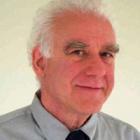
Lewis Carroll has worked in the accelerator field since 1969. He also led the development of innovative positron emission tomography (PET) Systems, including the first commercially- produced multi-slice BGO Neuro-Tomograph. Today, Carroll & Ramsey Instruments’ radiation detectors such as the “EzScan” Radio TLC scanner are used in PET labs and radiopharmacies world-wide.
Professional craft skills and specialties include:
- Specialized Cyclotron RF system design, troubleshooting, and repair
- Radiation Science, Instrumentation, Shielding, Health Physics, and Radiation safety

Dr. Abeysekera holds a Ph.D. in synthetic organic chemistry from the University of British Columbia and has more than 25 years of experience in radioisotope and radiopharmaceutical development, including production, radiochemistry, quality control, quality assurance and regulatory affairs activities in the United States and Canada.
At MDS Nordion, where he held positions in R&D, safety, and regulatory affairs, Dr. Abeysekera helped establish the company as a cGMP supplier of sterile pharmaceuticals; designed, developed and validated aseptic manufacturing facilities; directed scale-up from clinical to commercial manufacturing; and developed chemistry and manufacturing sections to support FDA submissions.
He subsequently served as Vice President, Manufacturing, for Molecular Insight Pharmaceuticals where he was responsible for all aspects of supply chain management for drug products for clinical trials and commercial supply and for contract manufacturing contracts and services.
Currently Dr. Abeysekera is President of PharmaSPECT Inc, a company that provides cGMP and Manufacturing, Quality and Regulatory expertise to PET and SPECT radiopharmaceutical manufacturers.
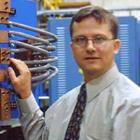
Dr. Dehnel has worked in the accelerator field since 1989. He completed his research doctoral thesis at TRIUMF/UBC in the area of charged-particle optics for ion source, injection line, and inflector design and measurement and is an expert in industrial cyclotron beamline and injection line system design and operation.
Dr. Dehnel is President of Dehnel—Particle Accelerator Components and Engineering, Inc. (D-Pace). D-Pace provides products and services to the commercial accelerator industry, with a focus on providing custom equipment, consulting services and training to owners and manufacturers of commercial cyclotrons. A recent development is the MiniPET Beamline which is only one metre long, has a mass of 50 kilograms, and provides XY steering and Horizontal/Vertical focusing to proton beams extracted from PET cyclotrons for optimized beam on target and more radioisotope production. Some users find it advantageous to move production targets 1 metre from the cyclotron so that local target shielding cuts down residual radiation that cyclotron maintenance personnel are exposed to.
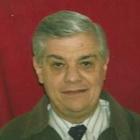
Bill began his career at Brookhaven National Laboratories working on the fundamentals of technetium-99m chemistry and generator systems. That introduction to radiopharmaceutical chemistry laid the foundation for some of his important contributions to the field of nuclear medicine, including the development of “instant kits” for 99mTc-radiopharmaceuticals, and later activities while serving as the Vice President of DiagnosticsR&D at the Squibb Institute for Medical Research, leading the group that developed the Sr-82/Rb-82 generator, [99mTc]teboroxime(CardioTec®) and gadoteridol (Prohance®).
Bill recognized early on the potential of PET and SPECT radioligands to target receptors and early in this new area of research convened a workshop in Washington DC in 1980 on“Receptor-Targeted Radiotracers” that led to the publication of a definitive two-volume series of the same name and laid firm groundwork for how the development of such tracers might best be approached and in what ways they might prove useful. In his research laboratories at George Washington University and the National Institutes of Health, Bill pioneered the development, evaluation and validation of new radioligands for estrogen, opioid, dopamine, muscarinic and serotonin receptors. Together with Richard Reba and colleagues, he used SPECT and radioiodinated 3-quinuclidinyl-4-iodobenzilate, a high-affinity ligand for the muscarinic receptor, to achieve the first in vivo human imaging of a brain receptor in 1983.
Notable beyond these primary accounts of his work are many contributions over several decades in the form of book chapters, editorials and essays by Bill and his colleagues. These contributions served as guidelines for the emerging field of radiopharmaceutical sciences and pointed out the increasing opportunity for clinical impact from translational studies.

Dr. Jonathan W. Engle is an assistant professor and cyclotron jockey in the departments of Medical Physics and Radiology at the University of Wisconsin. He has 12 years' experience in radionuclide production, accelerator targetry and radiochemistry, and as an analytical and preparative radiochemist in clinical and pre-clinical positron emission tomography (PET) scanning environments.
After completing his Ph.D. at the University of Wisconsin, Dr. Engle continued postdoctoral studies on staff at Los Alamos National Laboratory in the US Department of Energy, Office of Science's Isotope Production Program. He was promoted to Scientist after being awarded a Frederick Reines Fellowship. His research contributed to a national supply of the alpha-therapy isotope 225Ac, to nuclear databases and theoretical models in the 100-800 MeV (incident H+) range, and to novel, large-scale production of many radionuclides for medical research, neutrino mass measurements, environmental research, national security, nuclear nonproliferation and stockpile stewardship. In 2016, Dr. Engle joined University of Wisconsin Departments of Medical Physics and Radiology, where he leads the Cyclotron Research Group. His efforts are focused on radiometals’ production and novel small accelerator targetry, particularly for positron- and low energy electron-emitting radionuclides. In 2016, he also received a Department of Energy Early Career Award for research in spallation neutron radionuclide production.
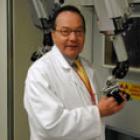
Dr. Günter Firnau has contributed innovatively to the development of PET chemistry over the last 30 years, establishing the PET radiochemistry at McMaster University and the University of Ottawa Heart Institute in Canada. He has invented a number of novel PET tracers. One of his innovations, 6-[F-18] fluoro-L-dopa, is now used the world over. He has held academic appointments at McMaster University, University of Toronto and University of Ottawa. He can provide hands-on consulting for PET isotope production with facility design, cyclotrons, targetry, radiochemistry and engineering of radiopharmaceutical synthesis ([F-18] FDG, 6-[F-18] fluoro-L-dopa, C-11 labeled tracers, [N-13] ammonia and others), quality control analysis, license applications, radiation safety programs and training of personnel. Dr. Firnau currently operates from Germany.

James Frost’s M.D., Ph.D. (nuclear and radiochemistry) degrees are from Washington University; his M.B.A. from Johns Hopkins University, also completing diagnostic radiology and nuclear medicine residencies there, becoming board certified in both specialties, and serving as a faculty member for 26 years. With a university clinical practice since 1982, he is also a clinical trials reader.
He was on the Johns Hopkins’ team that accomplished the first imaging of a neuroreceptor and led the group that first imaged the brain opioid receptor in 1983. In 15 years on Johns Hopkins Institutional Review Board, he saw human investigation protocols spanning all areas of medical research and was Chairman of the Radioactive Drug Research Committee and Clinical Radiation Research Committee, reviewing all studies involving ionizing radiation.
Dr. Frost designed Yale University PET Center, creating a 10-year financial and strategic plan for molecular imaging research across multiple University departments, co-managing a 10-year bioimaging alliance with Pfizer. Director of the PET Center, he was responsible for 25 staff, acquisition of $8M in equipment, including cyclotron, PET scanner, and chemistry laboratory, and Medical Director and Authorized User for ionizing radiation, Section Chief for Nuclear Medicine’s clinical PET-CT imaging and general clinical nuclear medicine studies. Currently President of BioMolecular Imaging, LLC and a part-time Professor of Radiology at Johns Hopkins, Dr. Frost advises pharmaceutical, biotech, imaging CRO, and venture capital companies on the use of molecular imaging for the development of new drugs and diagnostics. He is also a board member of Applied Computational Technologies and a member of the Phrma Imaging Group and the Uniform Protocols for Imaging in Clinical Trials (UPICT) group.
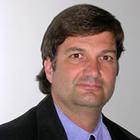
Michael Jamieson, DRSc., has built an international reputation around his ability to develop innovative regulatory solutions which enable companies to get products and facilities through the regulatory hurdles in a timely fashion. He is an experienced senior manager with over twenty years of diverse international research and development, regulatory approval and regulatory compliance expertise.
He is currently Director, Clinical Translation and Core Investigator, Clinical Epidemiology, at Ottawa Hospital Research Institute.
Mike has been involved in numerous nuclear medicine projects including the clinical trial design and regulatory approval of a number of therapeutic and diagnostic radiopharmaceuticals and the implementation of radiopharmaceutical GMPs in both the private and academic sectors. In recent years Mike has spent a significant portion of his time in South America overseeing the building of GMP compliant manufacturing facilities. In 1991, Mike founded Pharmacon Research Inc. (Ottawa, Ontario and London, U.K), created to assist international companies in integrated new product development programs for the North American market. In the fall of 2003, Pharmacon Research was renamed InSource Innovations Inc., and primarily focused on pursuing equity positions in university spin-offs in return for providing the clinical and regulatory expertise required to support the development of their product portfolios. He joined the faculty of the USC School of Pharmacy in 2007 after spending twenty-five years in the pharmaceutical and medical device industries.
Michael received his Master's from the University of Southern California in 2008 and was in the first graduating class for the Doctorate of Regulatory Sciences in 2011. Mike was appointed as the Associate Director of the University of Southern California’s International Center for Regulatory Science (http://regulatory.usc.edu/ ) in 2011. The Center includes an educational component which offers a graduate education program in regulatory science and management of drug development, an international outreach and support program, a research consortium with a focus on translational and regulatory research and a regulatory consulting group. Mike's research interests include the regulatory support of university-based researchers and the commercialization of medical products developed at universities.

Salma Jivan has worked in the PET field for over 35 years developing and producing over 30 radiopharmaceuticals at Lawrence Berkeley National Laboratory, University of California San Francisco, Pacific Parkinson’s Research Centre at UBC/TRIUMF, University of California Davis and BC Cancer Agency.
Salma has experience with many isotopes including C-11, F-18, O-15, N-13, Ga-68, I-123, I-124, Br-76, Zr-89, Cu-64, Y-90 and Lu-177. She has developed methods for manufacturing and quality control of new and established tracers for clinical and pre-clinical use under set USP and Health Canada guidelines. Her experience includes writing submissions for Clinical Trial Applications to Health Canada and the FDA. She was instrumental in establishing the Theranostics program at UCSF for Neuroendocrine tumors and prostate cancer therapy.
She has experience in setting up and implementing quality control procedures, establishing standard operating procedures and testing criteria required for product release and regulatory compliance. Synthetic methods were taken from bench to automation and optimized for consistently reliable radiotracer production. Salma takes on a hands-on, practical approach to laboratory instrumentation including operation, repair and maintenance necessary for a successful outcome.
Her cyclotron experience includes the TRIUMF EBCO (ACSI) 13 MeV cyclotron and has performed target development and design. Additionally, she participated in the maintenance and daily operation of the CTI/Siemens RDS111 cyclotron while at UC Davis, GE PETtrace 800 at UCSF and operating and maintaining a 25-year-old CTI/Siemens RDS111 cyclotron at Berkeley Lab.
Finally, her passion for learning and exploring interdisciplinary skills and approaches—including but not limited to organic chemistry, radiochemistry, analytical chemistry, pharmaceutical science, computer programming, and engineering--has led to deep networks and working relationships with researchers at other PET facilities, government institutions and industry.
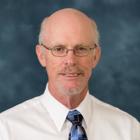
Currently Professor Emeritus of Radiology at the University of Michigan Medical School, Dr. Kilbourn has more than 40 years of experience in all aspects of radiopharmaceutical chemistry, including cyclotron target design; development of new methods and reagents for radiochemical syntheses; design and synthesis of novel PET radiopharmaceuticals; preclinical validation of new radiotracers in animal models; and implementation of unique new radio-pharmaceuticals for human Positron Emission Tomography (PET) studies. He developed methods for radiolabeling with fluorine-18 and carbon-11 now used routinely in PET radiochemistry and invented several PET radiopharmaceuticals utilized in human PET studies around the world. His contributions to the field or radiopharmaceutical chemistry, represented by more than 280 scientific papers, chapters and books, have been recognized by the Society of Nuclear Medicine and Molecular Imaging (2009 Paul C. Aebersold Award for Outstanding Achievements in Basic Science Applied to Nuclear Medicine; 2014 Michael J. Welch Award) and the Academy of Radiology Research (2012 Distinguished Investigator Award).
From 1987 to 2012 he was Director of PET Radiochemistry at the University of Michigan, responsible for the administrative, personnel, financial, and regulatory aspects of the cyclotron and radiochemistry laboratory. In 2004-2005 he designed, equipped, and brought into functional use a new 7000-sq ft. cyclotron and radiochemistry facility for routine delivery of PET radiopharmaceuticals for both research (animal and human clinical studies) and patient care. After >35 years of continuous funding through research grants from the National Institutes of Health, U.S. Department of Energy, and various pharmaceutical companies, he retired from active laboratory work but continues to be engaged in mentoring and consulting.
He is a co-founder of Synfast Consulting LLC, which provides consulting advice and practical assistance in the design, installation and operation of PET radiochemistry facilities for both research and clinical care.

Founder | Managing Consultant, RadiateCare Ltd
Jacqueline provides design, implementation and go-live consulting services for new PET/CT services who are planning retrofit or greenfield equipment upgrades or design-bid-build capital projects in the Molecular Imaging space.
Equipped with two decades of front-line clinical experience in diagnostic and therapeutic care, specializing in Molecular Imaging (PET/CT, Nuclear Medicine) & Computed Tomography (CT), and firsthand experience in all modalities across diagnostic imaging, radiotherapy, theranostics, and laboratory, RadiateCare can reduce your risk and ensure a smooth launch or operation of your PET/CT service. Clinical Project Management, Construction Site Coordination, and Medical Equipment Planning are also available.
Through purposeful planning and thoughtful design, her consulting business, RadiateCare Ltd, will help you to achieve the best possible clinical outcomes, given your space and budget constraints - working with you one-on-one to ensure a successful launch and transition to operations.
We can help you choose your site, design your department layout (using LEAN principles and optimizing for clinical workflow), choose and procure your imaging and accessory equipment, establish a radiotracer delivery pathway, apply for necessary nuclear radiation or other regulatory licenses, organize and implement your radiation safety plan, assist with hiring technical staff and training, guide transition from build/install to go-live and operations, make your department accreditation-ready, and ensure your new PET/CT service is providing top of the line, cutting edge clinical excellence – all the while, operating efficiently, cost-effectively, and delivering a great experience for patients, staff, and clinicians alike.
Founded in New Zealand, with on the ground experience and strong connections across North American and Australasian markets, Radiate Care can provide molecular imaging expertise worldwide. We will provide the guidance and focus you need to ensure your project is completed within scope, on time, and on budget.

Dr. Stokely has worked in the accelerator field since 2003. He completed his research doctoral thesis at North Carolina State University in the area of high-power water targets for the production of F-18.
Dr. Stokely is the managing partner for BTI Targetry, LLC (formerly Bruce Technologies), which provides commercial cyclotron target products and services to a worldwide customer base. He has organized more than 60 cyclotron target upgrade projects since 2008. Research interests include simulation of radiation transport and thermal hydraulic phenomena, control system design, and radiation-hardened systems design. Dr. Stokely also maintains an appointment as Adjunct Associate Professor in Nuclear Engineering at North Carolina State University.

Hector Valdovinos is currently a Postdoctoral Researcher in the Nuclear and Chemical Sciences Division at Lawrence Livermore National Laboratory, beginning October of 2020. His current research focuses on the development of an automated field-deployable radiochemistry system for nuclear forensics. He has experience in analytical nuclear chemistry techniques such as gamma and alpha spectrometry, HPLC, TLC, GC, MP-AES, XRF spectroscopy and UV-Vis absorbance spectroscopy, in LabVIEW programming, CAD design, 3D-printing and microfluidics.
For the past 3-1/2 years Hector held a position as Medical Physicist at the Instituto Nacional de Cancerologia - Mexico (INCan Mexico), where he operated and maintained an 18 MeV proton cyclotron (IBA Cyclone), a station for solid target irradiation (IBA Nirta Solid) and a module for radiolabeling of [11C]CH3I (Synthra). His main responsibility at INCan was the translation of 64Cu-radiolabeled peptides into the clinic as a substitute of 68Ga-labeled analogues. His research focused on the development of novel targetry and separation chemistry approaches to introduce into the field of Nuclear Medicine uncommon radiometals that have favorable decay characteristics for positron emission tomography (PET) and even targeted radionuclide therapy such us 64Cu, 61Cu, 44Sc, 66Ga, 68Ga, 86Y and 89Zr. He also has experience in conjugation of proteins with bifuncional chelators, in automation of radiochemical separations and in analytical measurements with gamma spectrometry, HPLC, TLC, GC, MP-AES and XRF.
To date Hector has collaborated with Cyclomedical in the installation of radiopharmacies in Ecuador, Mexico and Peru.
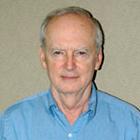
Bruce Wieland has four decades of engineering research experience in the field of cyclotron targets for the production of 11C, 13N, 15O, and 18F used to label radio-pharmaceuticals for PET/CT metabolic imaging. With a BS in Mechanical Engineering and a PhD in Nuclear Engineering, Bruce has worked at national laboratories (ORNL, BNL), universities (UCLA, Duke), and private companies (CTI, BTI).
He has numerous publications and targetry innovations and is a founder of the International Workshop on Targetry and Target Chemistry (held every two years since 1984). He is President of BTI Targetry (founded in 2002), which has sold over 100 high performance retrofit targets for producing 18F with Siemens, GE, and IBA cyclotrons. He has also worked with 211At targets (monoclonal antibodies for brain tumor therapy).
Bruce has been the Principal Investigator on several SBIR grants (5 NIH, 1 NSF). His current focus is R&D on enriched 11B and 13C recoil-escape porous nanomaterial targets for producing high yields of 11C and 13N at low proton energies (7-11 MeV), in support of biotracers like 11C-choline for prostate cancer detection and 13N-ammonia for rest-stress cardiac studies.



